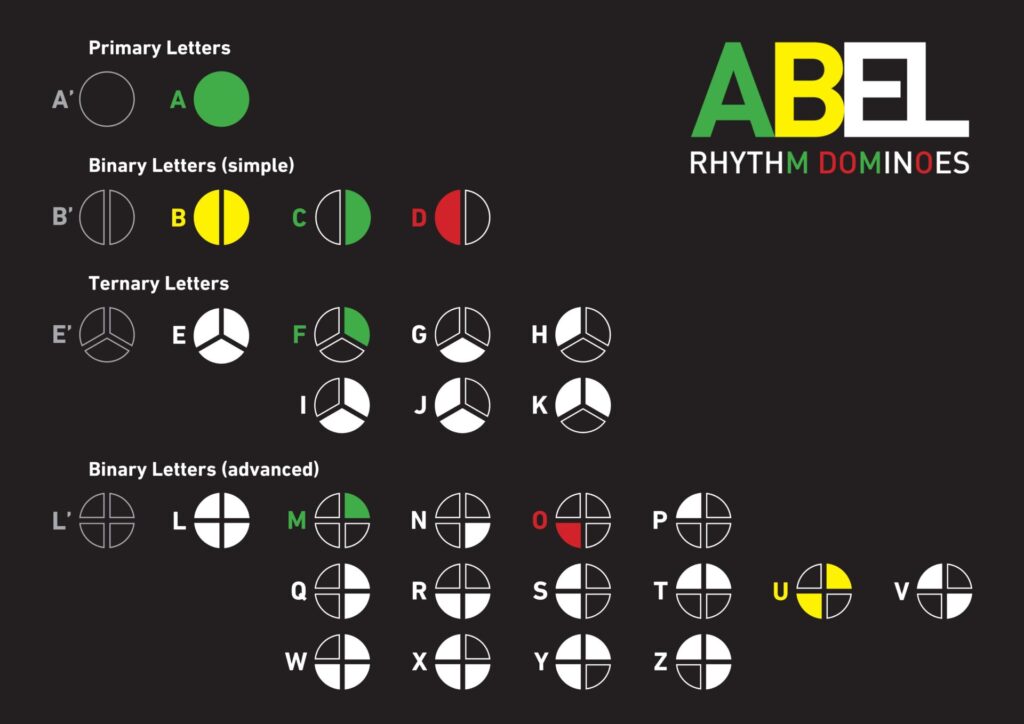In musical notation, a rest is the sign used to indicate the absence of a sound for a defined period of time.

In musical notation, a note value indicates the relative duration of a note, using the texture or shape of the notehead, the presence or absence of a stem, and the presence or absence of flags/beams/hooks/tails. Unmodified note values are fractional powers of two, for example one, one-half, one fourth, etc.
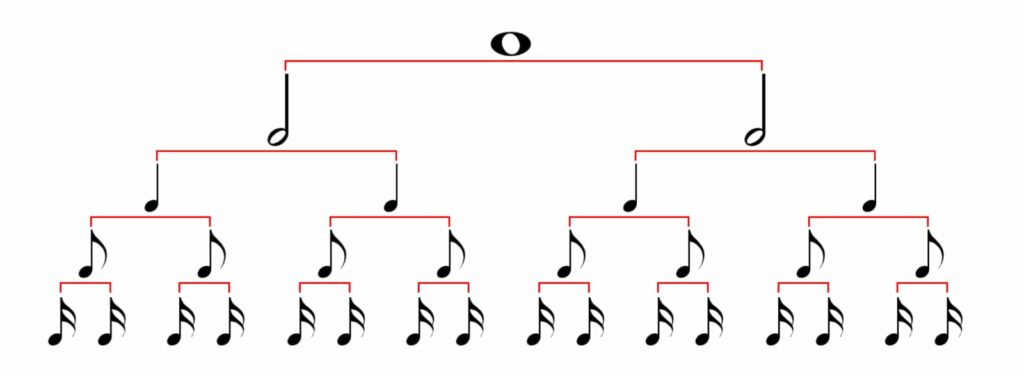
The length of a rest corresponds with that of a particular note value, thus indicating how long the silence should last. Each type of rest is named for the note value it corresponds with, and each of them has a distinctive sign:
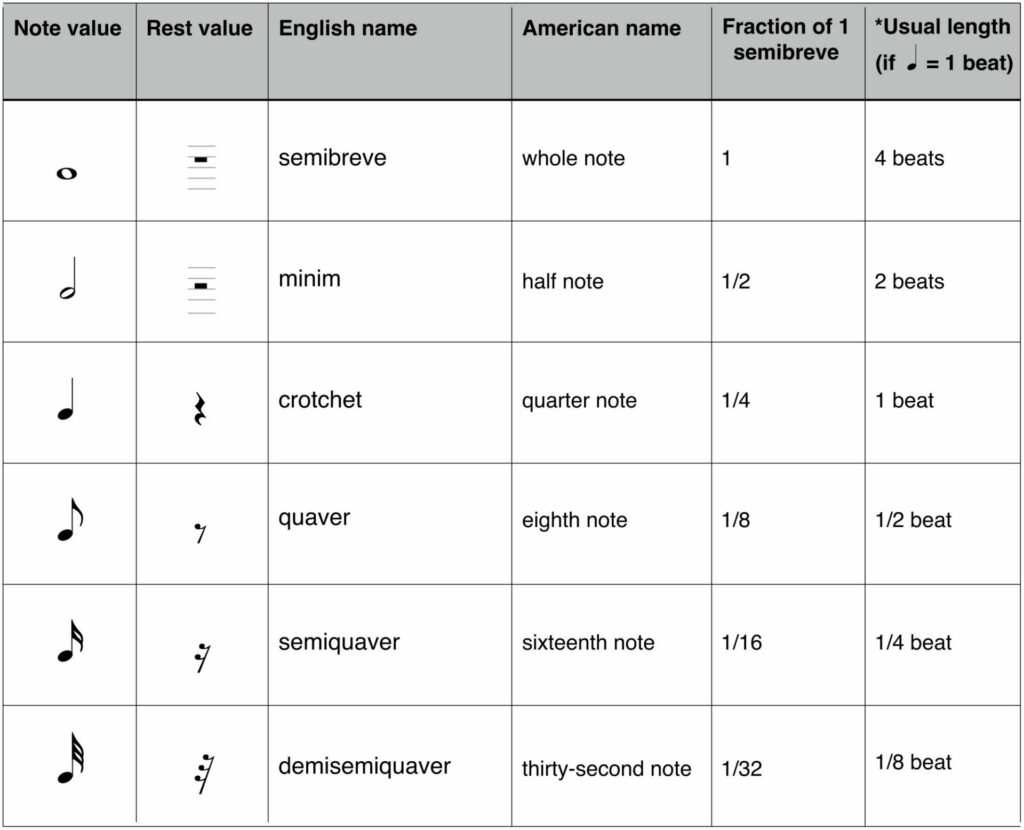
Relative value of rests:
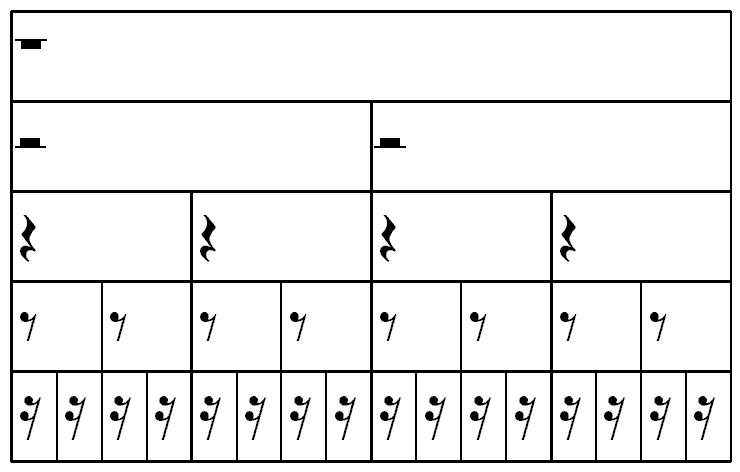
Relative value of notes:
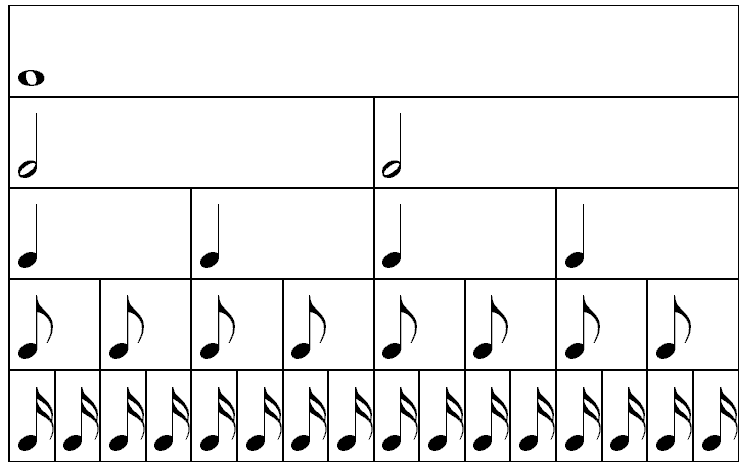
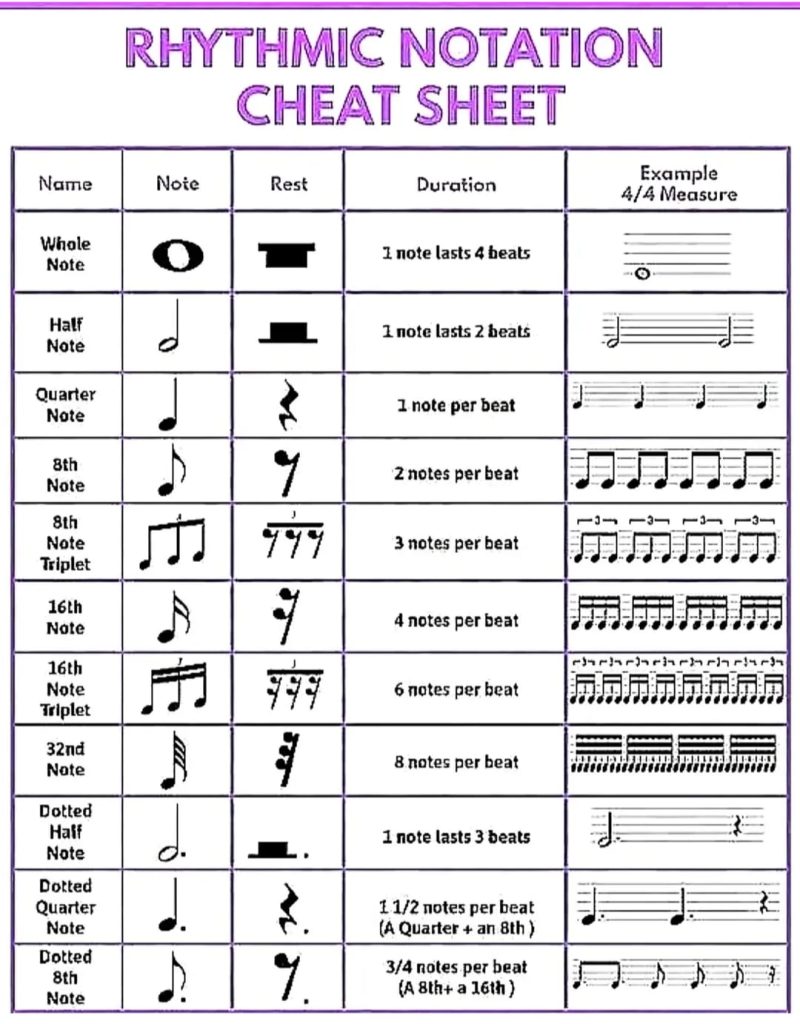
A single eighth note, or any faster note, is always stemmed with flags, while two or more are usually beamed in groups.
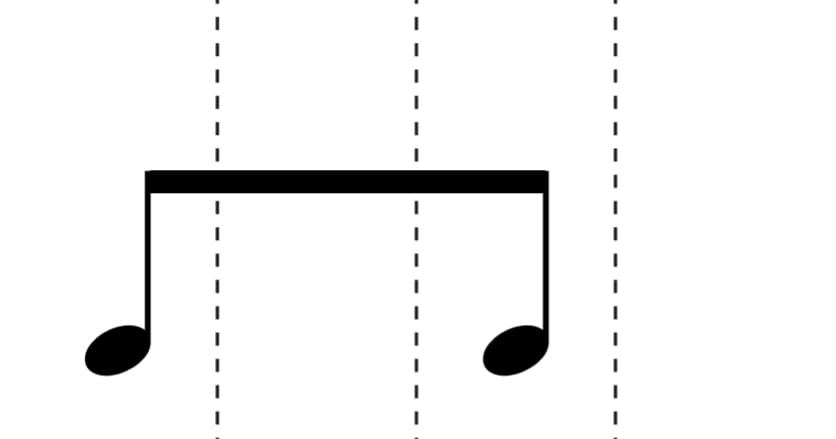
A note or rest value may be augmented by adding a dot after it. A dot added to the note or rest increases the duration of that note or rest by half.
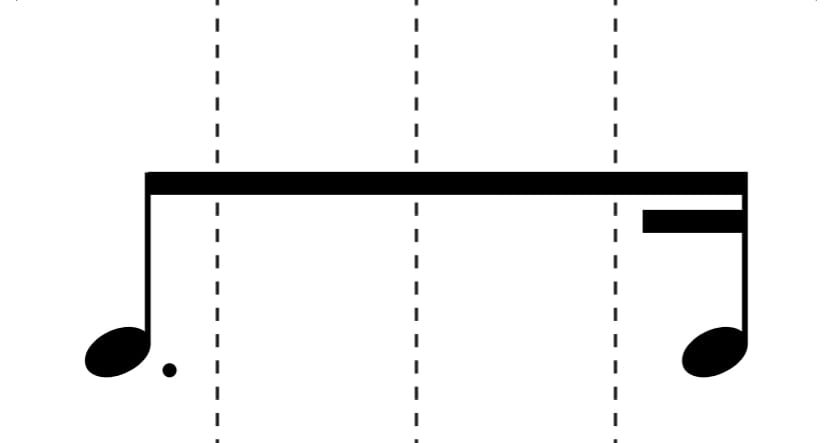
Triplets in music are notes and/or rests connected by a bracket and indicated with a number 3, that equally divide a beat into three equal pieces.
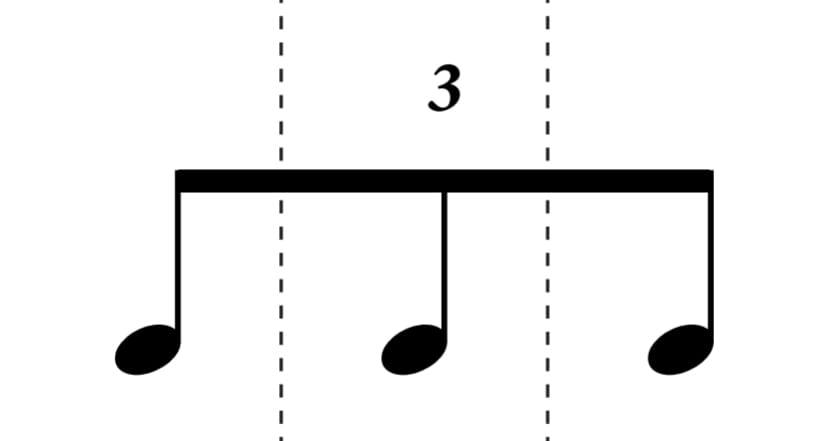
ABEL game is based on a time signature in x/4.
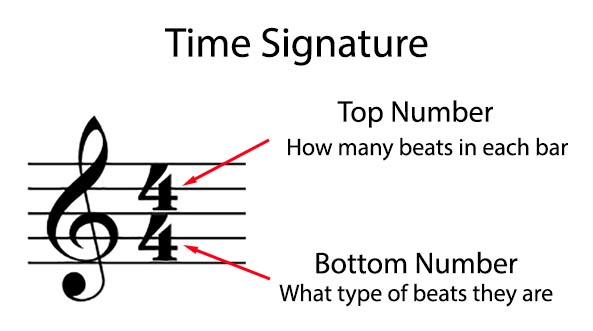
The time signature indicates two things. The top number tells us the number of beats in a measure, and the bottom number tells us the type of note that gets one beat. In musical notation, a measure (or bar) is a segment of music bounded by vertical lines, known as bar lines, usually indicating one or more recurring beats.
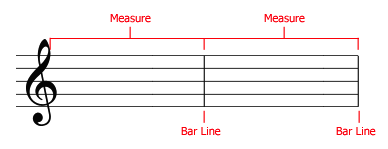

A 4/4 time signature for example indicates that there is the time value of 4 quarter notes per measure.
Each measure can have as many beats as the composer desires. For example: 2/4 or 4/4.
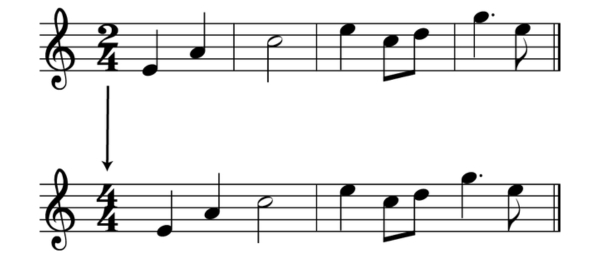
With ABEL game, 1 PULSE or BEAT = the time value of 1 QUARTER NOTE (or REST).

However, you can apply ABEL‘s rhythmic patterns to ANY other time values such as the whole note, the half note or even the eighth note or sixteenth note.
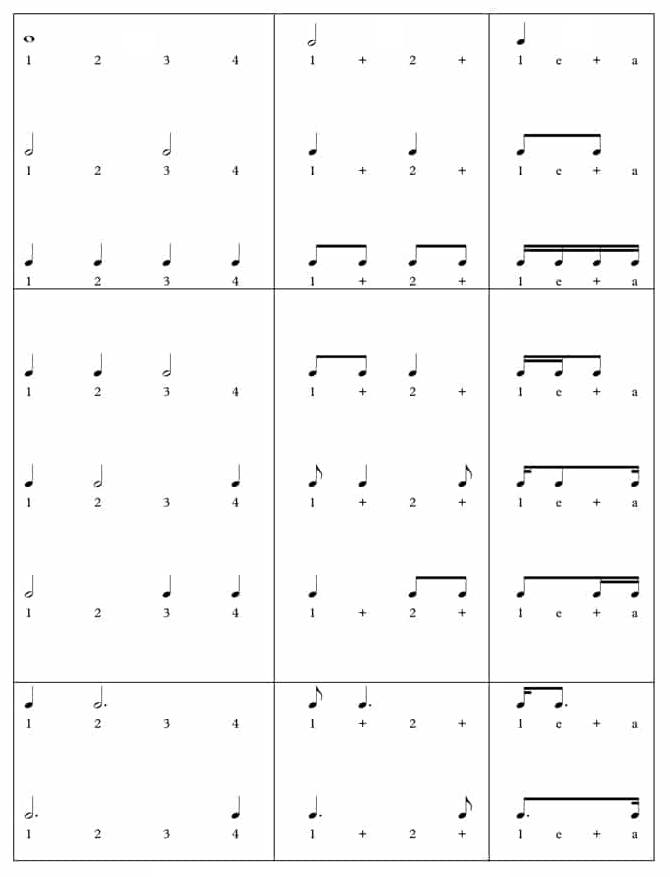
An example with the eight note:
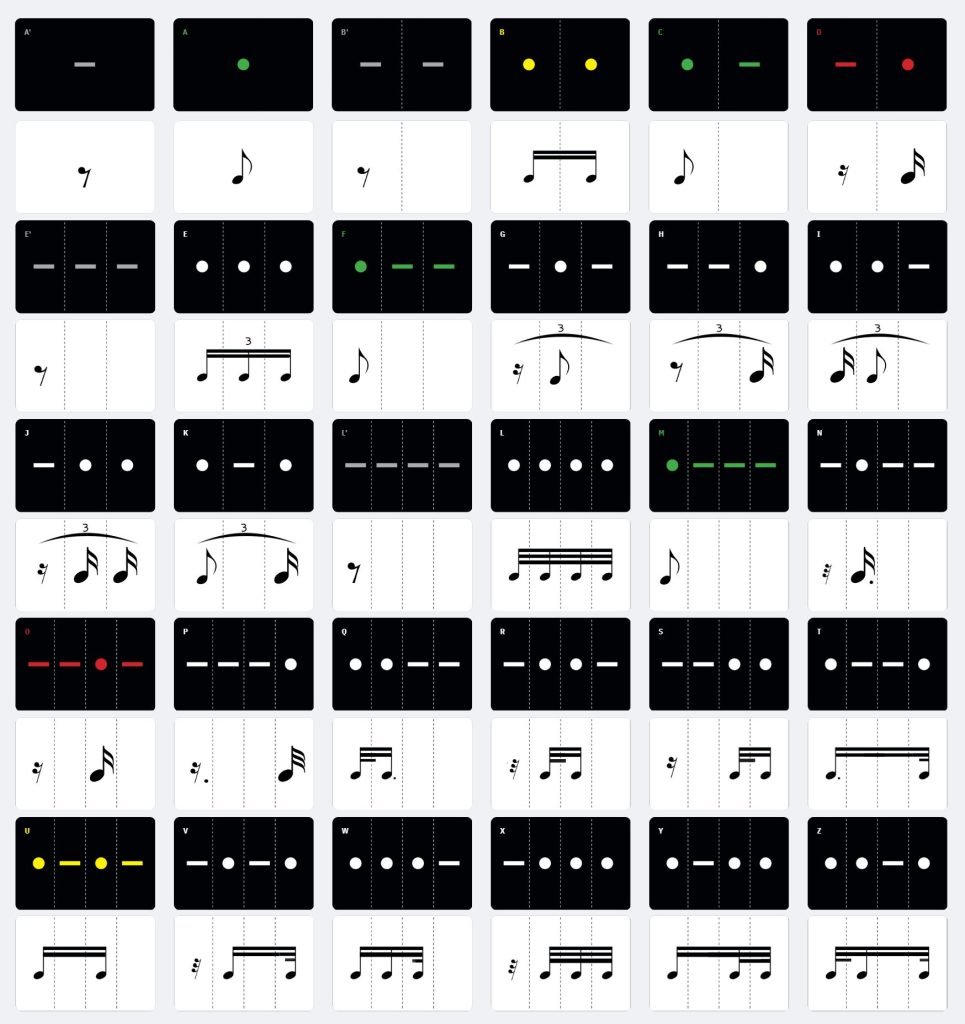
The Classic ABEL deck with the quarter note:
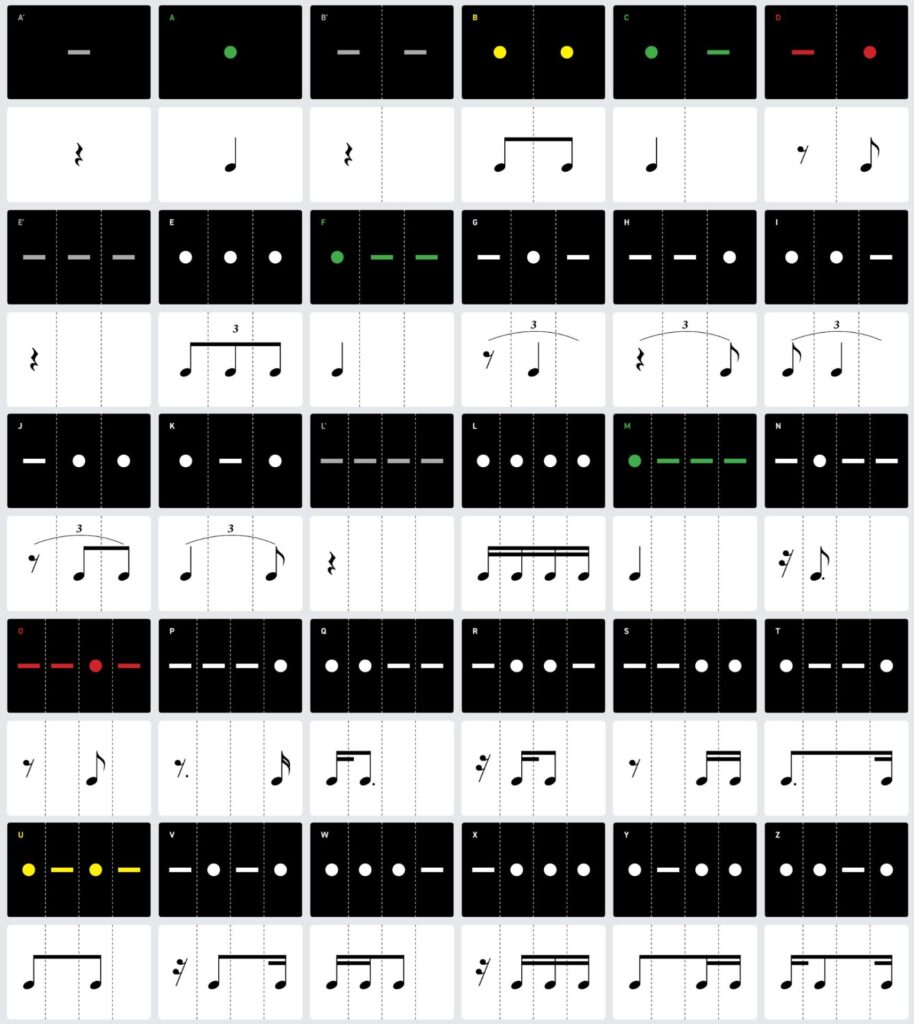
An example with the half note:
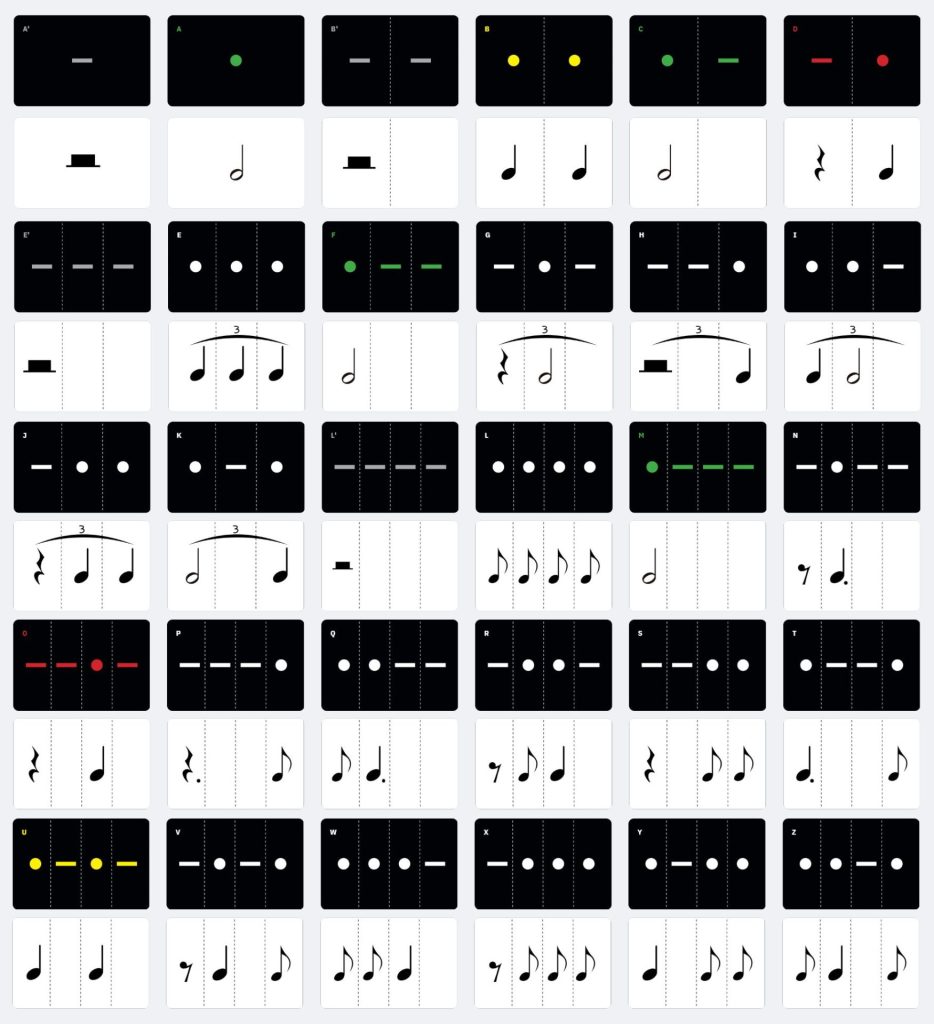
An example with the whole note:

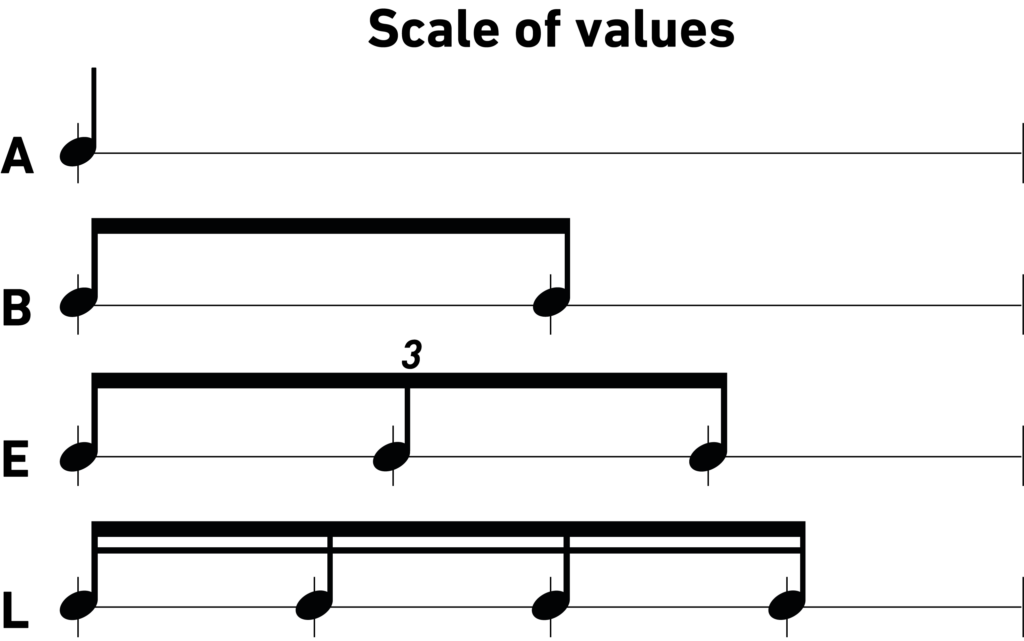
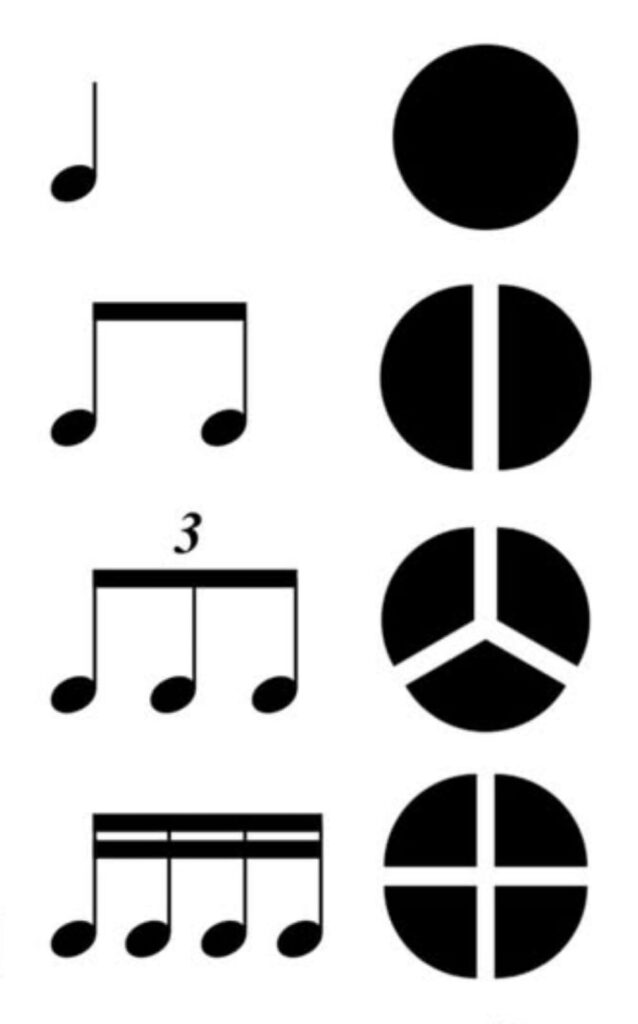
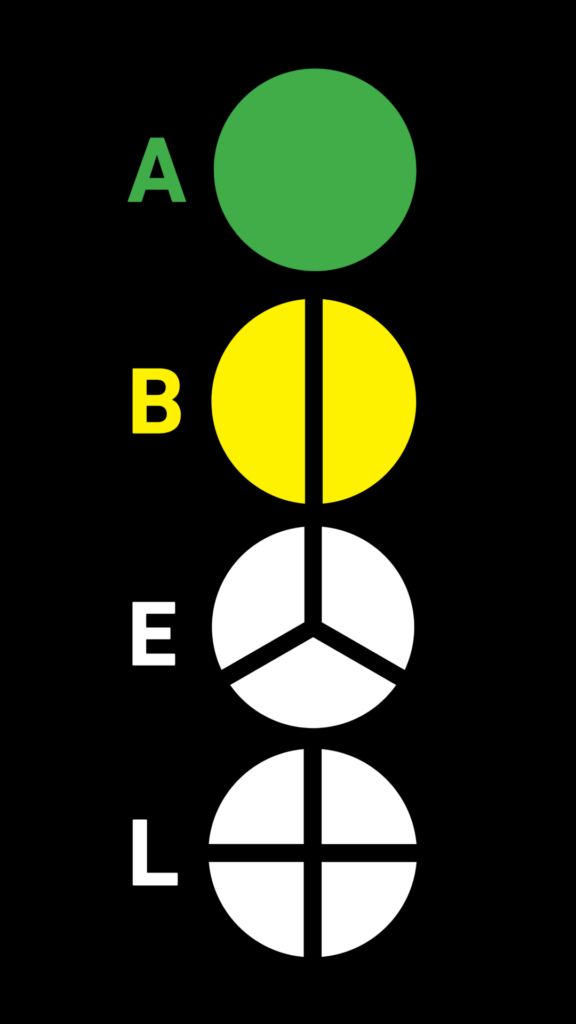
How to count ?
Counting out loud is really helpful. It’s like a ruler that keeps the rhythm precise and measured. If you don’t count your rhythm it can be like trying to build a house without measuring anything. The counting method used in 4/4 can easily be adapted to any other time signature.
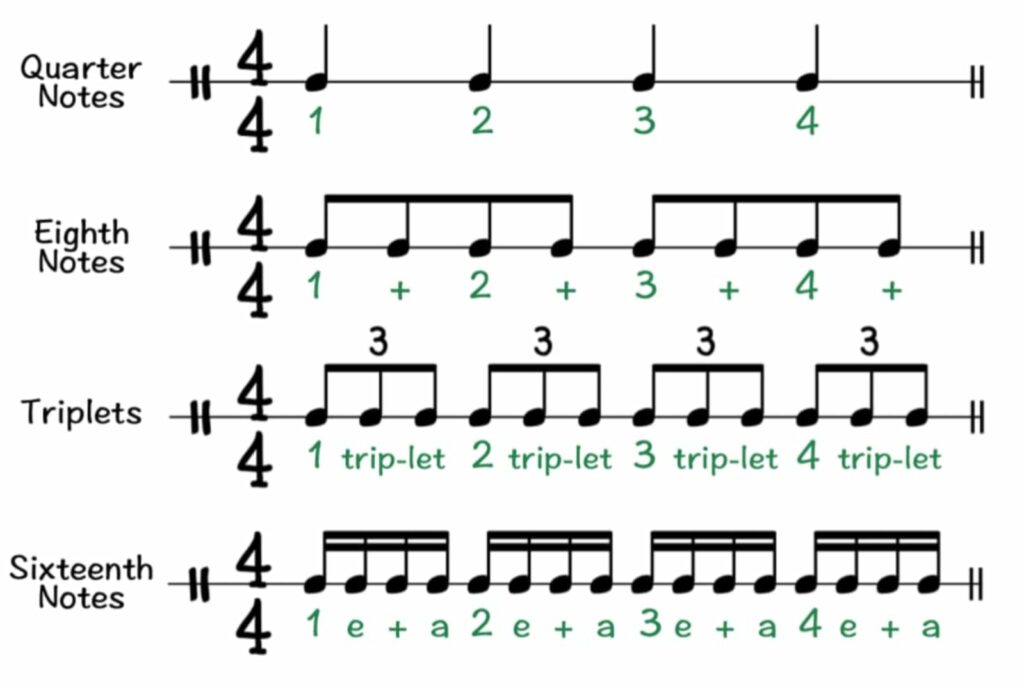
It’s crucial to introduce the “say-as-you-play” method through slow tempos and simple rhythmic notation such as quarter notes and quarter rests.
To go further in the pulse (sub)divisions ➗
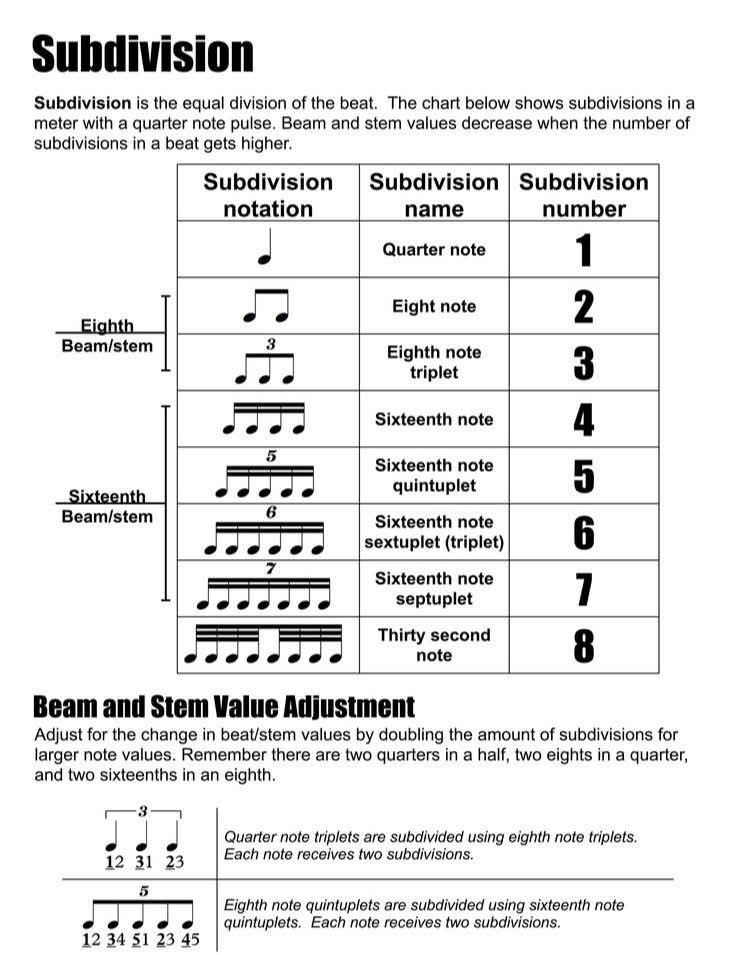
Here is a scale of values which (sub)divides the quarter note up to 9 :
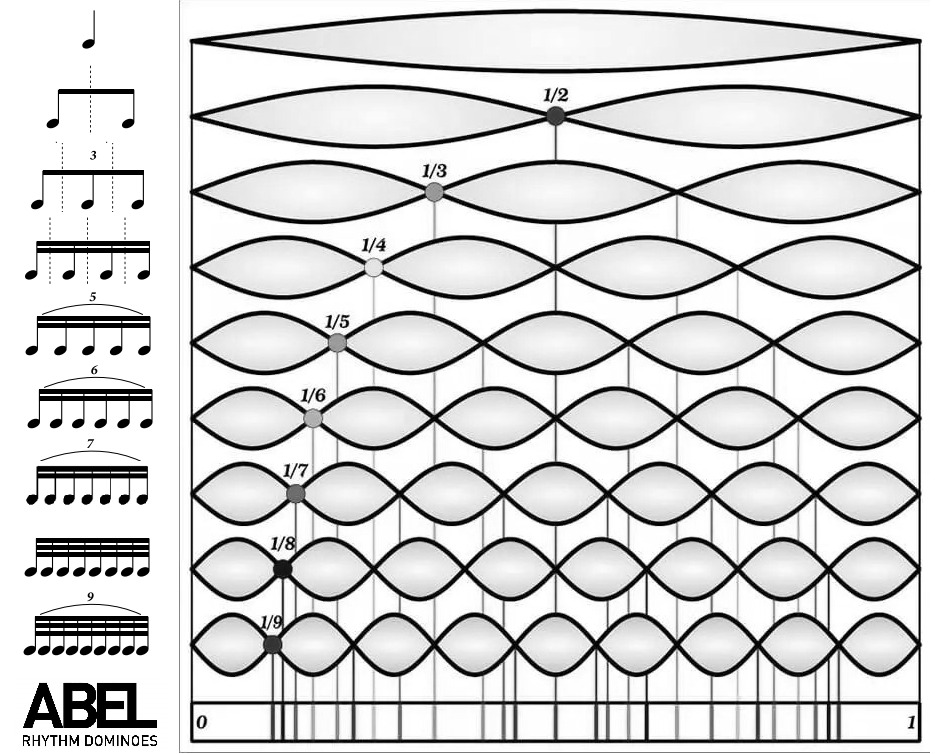
There are different ways to group notes.
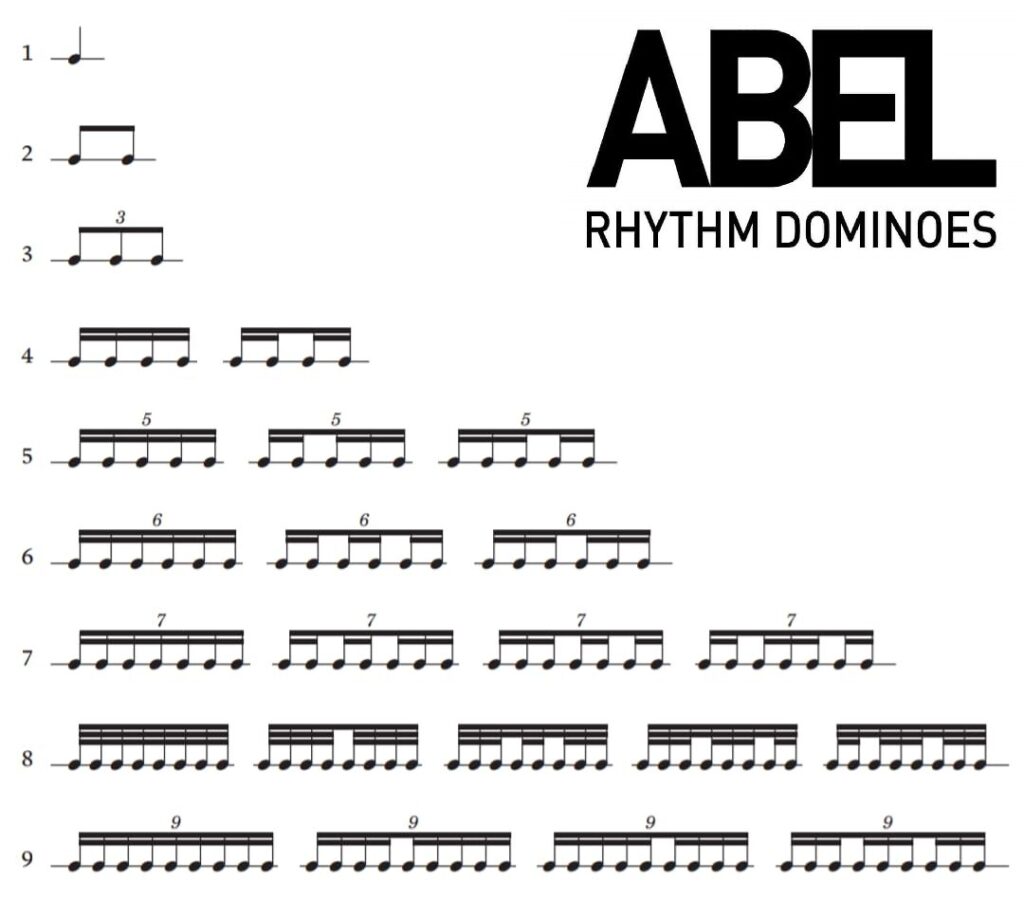
Good to know 💡
When you move up a level in the (sub)division, you double the number of rhythmic possibilities.
By 1, you have 2 possibilities. (A)
By 2, you have 4 possibilities. (B)
By 3, you have 8 possibilities. (E)
By 4, you have 16 possibilities. (L)
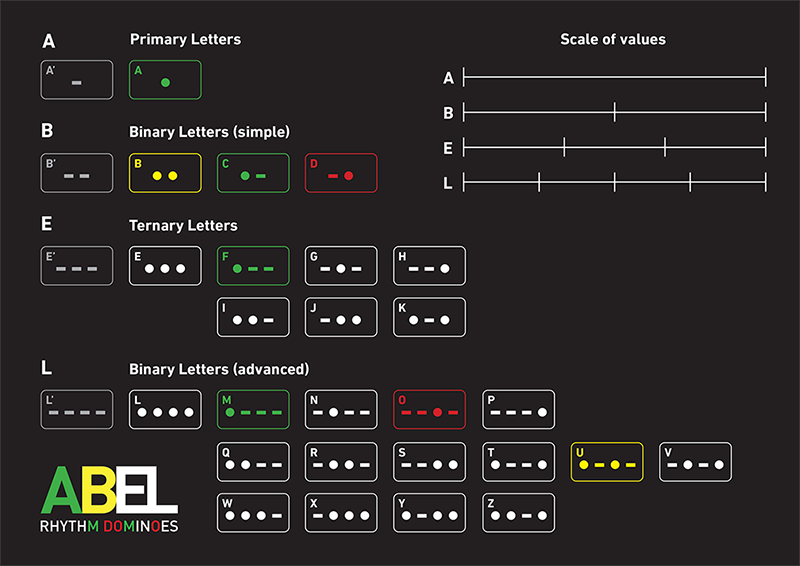
By 5, you have 32 possibilities. (B x E)
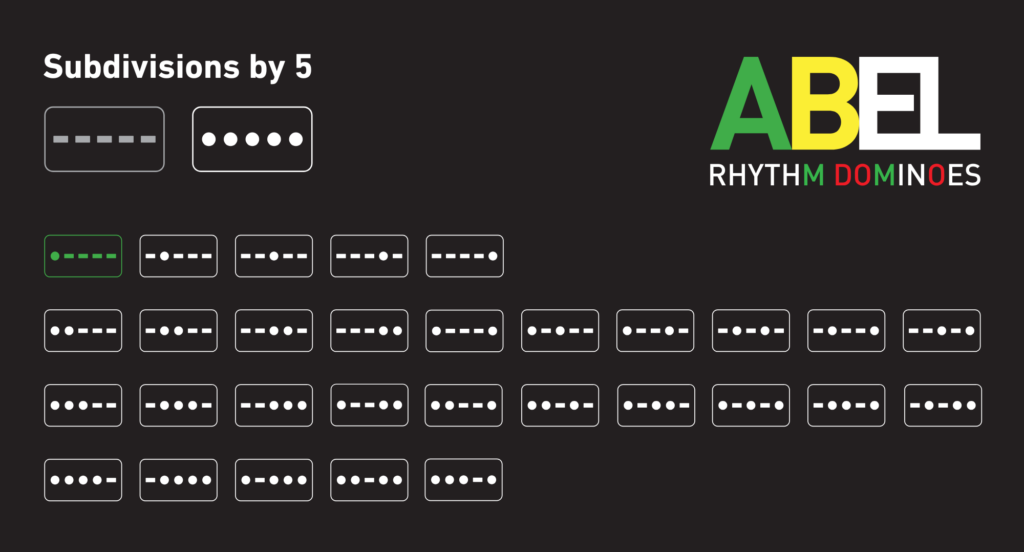
By 6, you have 64 possibilities. (E x E)

By 7, you have 128 possibilities. (E x L)
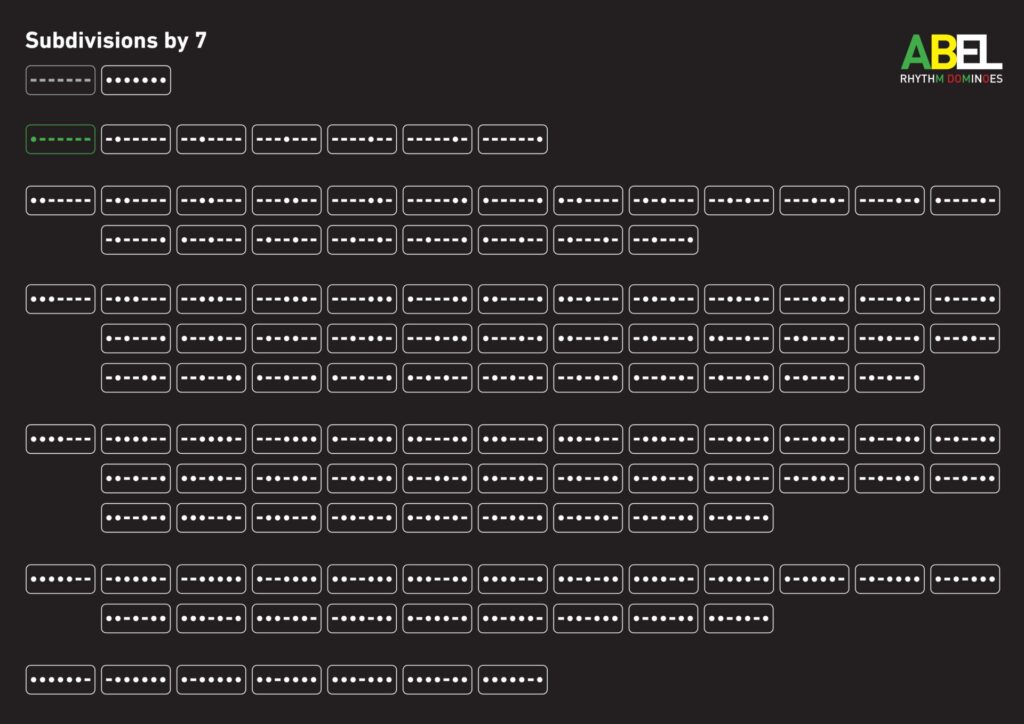
By 8, you have 256 possibilities. (L x L)
By 9, you have 512 possibilities. (E x E x E)
By 10, you have 1024 possibilities. (L x L x B)
By 11, you have 2048 possibilities. (L x L x E)
By 12, you have 4096 possibilities. (L x L x L)
